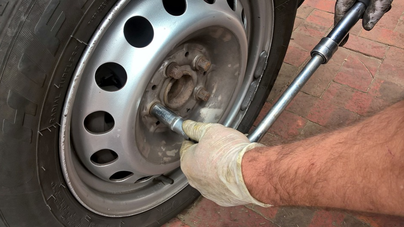Get Road-Ready with Expert GMC Tires Service at Morris Tires
Get Road-Ready with Expert GMC Tires Service at Morris Tires
Blog Article
Tire Service: The Influence of Climate Condition
When it pertains to ensuring optimum efficiency and security when traveling, recognizing the effect of weather on tire service is crucial. From scorching warmth to icy roadways, each climate element can significantly influence tire capability and general driving experience. By diving into the effects of differing weather on tires, vehicle drivers can get important insights that might improve their vehicle's performance and longevity. In this discussion, we will discover the elaborate partnership in between climate condition and tire service, dropping light on the value of weather-specific tire maintenance practices and considerations.
Warmth and Tire Performance
When exposed to high temperature levels, tires experience modifications in efficiency that can substantially influence car safety and security and handling. The warmth produced from extended driving or warm weather condition conditions triggers the tire rubber to soften, leading to reduced step life and increased wear.

Winter Impacts
Cold weather conditions can have a considerable impact on tire performance and safety and security. In cold weather, tires might likewise lose air stress more swiftly, which can impact handling and gas performance.
To reduce the effects of winter on tires, it is essential to routinely inspect tire stress and inflate them to the manufacturer's recommended levels. Using winter months or all-season tires created for winter conditions can likewise enhance traction and grasp on icy or snowy roads. Correct tire maintenance, consisting of regular inspections for wear and damage, comes to be also more important throughout cooler months to guarantee ideal performance and safety.
Rainy Issues Effect
Throughout wet problems, tire performance and safety can be substantially influenced by the damp road surfaces and minimized visibility. The step pattern of tires plays a crucial role in maintaining traction on damp roadways. Tires with damaged treads are extra prone to hydroplaning, where a layer of water constructs up between the road and the tire surface area, causing loss of grip. To battle this, motorists should routinely examine their tires for appropriate tread deepness and think about purchasing tires particularly created for wet problems.
Additionally, wet weather can likewise decrease presence, making it challenging for motorists to see the roadway in advance clearly (GMC Tire Service). In such problems, it is important to readjust driving rates as necessary and preserve a risk-free adhering to range to permit abrupt stops. Appropriately filled with air tires can also aid in keeping control on wet roadways by providing far better handling and grasp
Snow and Tire Safety And Security
Snow-covered roadways present special challenges for vehicle drivers, highlighting the importance of appropriate tire option and maintenance. When driving like it in snowy conditions, having the best tires can make a considerable distinction in security and performance. Wintertime tires are developed with special rubber compounds and step patterns to offer much better traction on snow and ice compared to all-season tires. The deeper treads and sipes of wintertime tires help hold the roadway better, lowering the danger of sliding and gliding.

It is essential to adhere to supplier instructions when using and setting up tire chains to protect against damages to the tires and vehicle. By picking the appropriate tires, preserving appropriate inflation, and taking into consideration extra traction aids like tire chains, drivers can improve their security when browsing snow-covered roads.
Weather-Related Tire Maintenance
Weather-related tire upkeep incorporates a variety of techniques intended at guaranteeing optimum tire function and long life in different weather condition circumstances. One vital element of weather-related tire maintenance is tire pressure law. Checking tire step routinely and replacing tires when step wear reaches a certain deepness is essential for preserving grip and stability in damaging weather condition.
Final Thought
In conclusion, weather problems have a substantial impact on tire performance and security. From heat affecting tire pressure and wear to cool visit here climate minimizing traction, it is important to consider the weather condition when preserving and using tires.
In this discussion, we will discover the complex relationship between weather problems and tire solution, dropping light on the significance of weather-specific tire maintenance practices and considerations.

Report this page